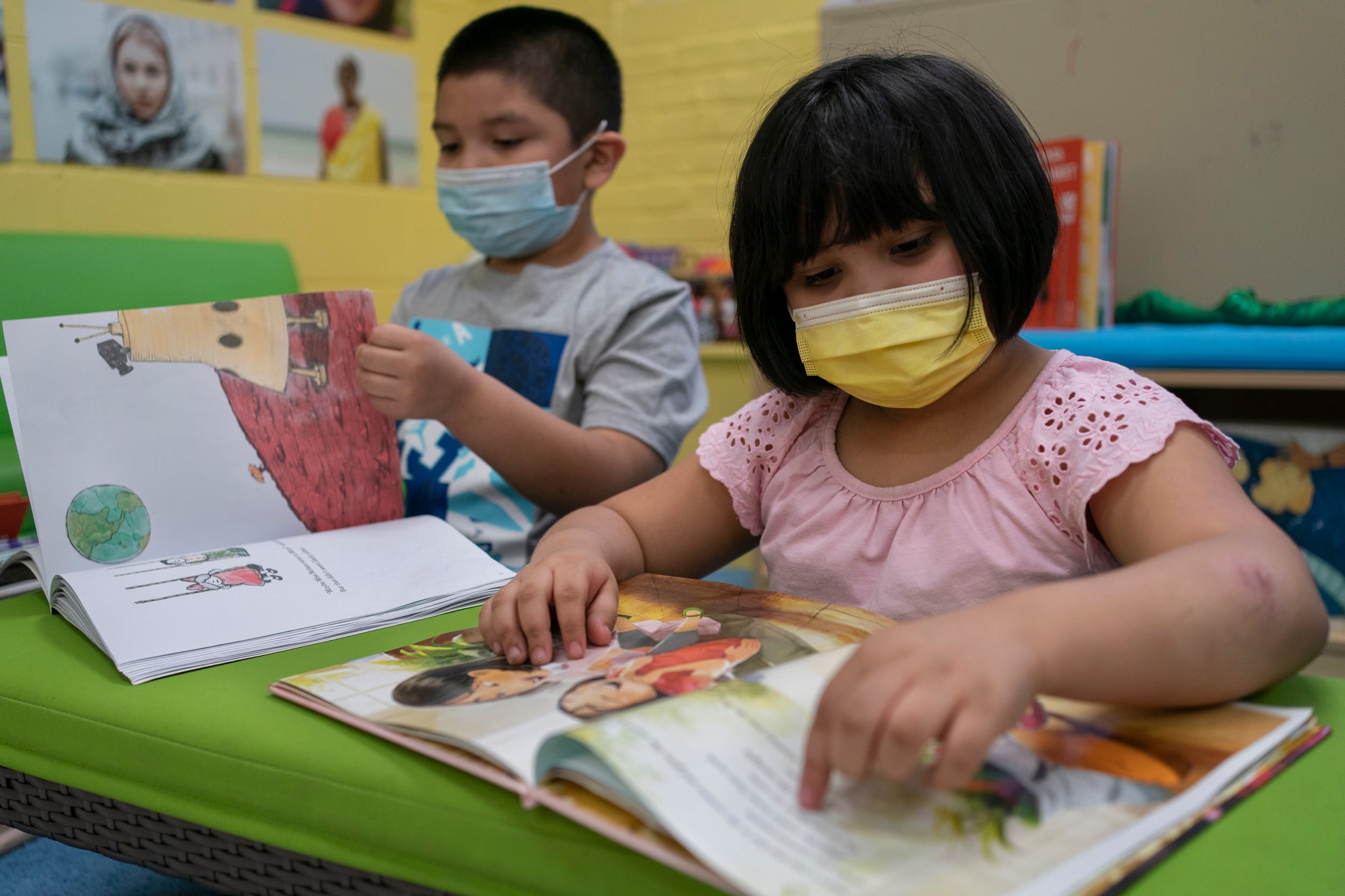Hilary Muñoz is a special education teacher at Chicago Public Schools who has taught reading to bilingual students on the city’s southwest sides.
The national board certified teacher was finding that her students, who are native Spanish speakers, had not been progressing in reading before coming to her classroom. After a fruitless search for answers and receiving pushback from administrators, she did her own research and created an approach that enabled her students to progress. It was based on phonics-based instruction.
When asked if her students were struggling with reading due to a language barrier or a reading issue, she said that it was an issue with the instruction that they received in the past. Muñoz said at a panel on Tuesday night that rather than focusing on curriculum, she devised an approach to help her students learn to read and comprehend what they were reading.
Muñoz spoke to educators, reading advocates, and parents at a discussion on literacy instruction hosted by the CPS Parent Literacy Collaborative and the non-profit group Brightbeam.
Reading advocates throughout Illinois say students struggle to read because schools are not using the science of reading, including teaching phonics. Now, they say, it’s even more important for schools to embrace effective methods as they try to catch up students who are not reading at grade level after the coronavirus pandemic disrupted learning for more than two years.
Illinois test scores from the 2021-22 school year show that only 29.9% of students from third to eighth grades met state standards in reading, a 7.5 percentage point drop from 2019.
Earlier this year, literacy advocates pushed a bill to standardize reading instruction across the state. The Right to Read Act would have required the state to create a list of evidence-based reading programs and develop lists of support, training, and grants for interested districts The bill also would have created a statewide online training program for current teachers in early education and elementary schools, and would have required teachers seeking licensure to show knowledge of effective reading instruction.
The bill did not pass, but reading advocates anticipate reviving it during the lame-duck session in January or in the spring legislative session.
Even with momentum to change how schools teach reading, schools throughout Illinois and the country still stick to debunked methods. Some local schools use an approach called “balanced literacy” that mixes some phonics into “whole language instruction,” which is based on a philosophy that reading is a natural process.
Elsa Cárdenas-Hagan, a bilingual speech-language pathologist, said during the panel discussion on Tuesday that schools must embrace an evidence-based approach to teaching reading and that educators must use multiple strategies to help students learn how to read.
“To be able to learn to read, you have to have those foundational skills, and that includes understanding how the structure of language works,” said Cárdenas-Hagan, who is president of the Valley Speech Language and Learning Center in Texas. “What are those letters and sounds, how do we blend them together, do we have the ability to process those sounds, can we read them ... all the while to be working on language and those high levels of comprehension.”
Maurice Swinney, a former Chicago Public Schools administrator, said he spent time as a principal trying to figure out how to help his high school students read at grade level.
“One of the missed opportunities that I had looking back was not focusing on how the brain takes in information in order to create a reading schema. Meaning, when you start to see these words all the time you know what they mean,” Swinney said. “I think it is important for classroom teachers to become scientists to understand how the brain works.”
If students are not proficient in reading by the end of third grade, they are four times more likely to drop out of school or fail to graduate, according to a national study. Also, some incarcerated people are not able to read or have undiagnosed dyslexia.
Some families are taking action against schools for not teaching their children to read. A group of Michigan students sued the state in 2020 for not providing them with a proper education. A similar case was settled in California.
States around the country have passed laws to teach the science of reading in the early grades and states have used federal COVID relief funds to expand reading programs. Some have created a statewide curriculum and recommended textbooks, third grade literacy screenings, professional development for teachers, and revamping teacher preparation programs.
At Tuesday’s panel, an audience member asked how schools can prevent failure and instead help students succeed in reading before they fail.
Kareem Weaver, a national advocate for the science of reading, said that “Prevention looks like early screening. Prevention looks like tier one instruction that follows the science and research consensus. Prevention means that you’re not skipping steps,” said Weaver, the co-founder of the Oakland, Calif.-based literacy group Fulcrum. “Prevention means that you have a solid curriculum that includes phonemic awareness, so we can attend to the sounds kids are hearing.”






